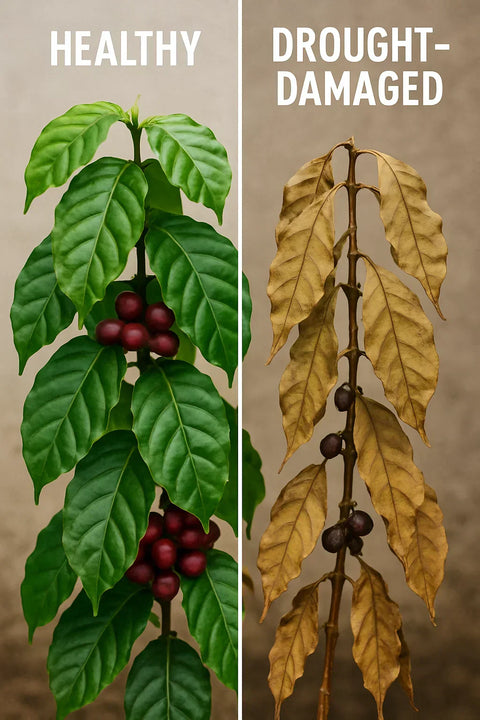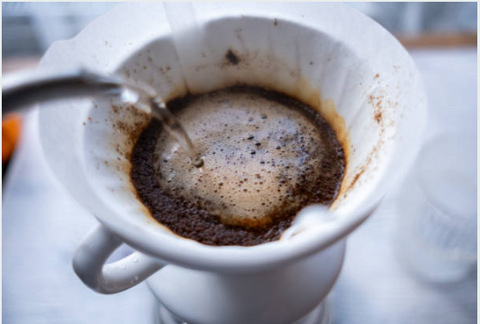What climate change means for your brew
You may not taste it right away, but climate change is already altering the flavour, cost, and future of your daily cup of coffee.
From rising temperatures to shifting rainfall patterns, the effects of global warming are putting pressure on coffee farmers, reducing crop yields and driving up prices. But what does that mean for you—and for the future of the coffee industry?
Let’s break it down.
Coffee’s Climate Sensitivity
Coffee, especially the beloved Arabica variety, is one of the most climate-sensitive crops in the world. It thrives under very specific conditions: steady rainfall, moderate temperatures, and stable seasons—conditions that are becoming increasingly rare.
A 2022 study published in "Climatic Change" predicts that by 2050, the land suitable for growing Arabica coffee could shrink by up to 50%. That means less high-quality coffee and more pressure on farmers trying to maintain yields.
How is climate change affecting coffee?
1. Rising temperatures
Warmer climates speed up coffee plant development but reduce bean quality. In some regions, plants are ripening too fast, leading to underdeveloped flavour
2. Drought & unpredictable rainfall
Extreme weather patterns—like prolonged droughts or sudden heavy rains—can damage crops, delay harvests, and even wipe out entire harvest seasons. Brazil and Ethiopia have both experienced significant losses in recent years.
3. Spread of pests and disease
Warmer, wetter climates are creating ideal conditions for pests like the coffee berry borer and diseases such as coffee leaf rust. These threats are spreading to areas that previously weren't at risk, putting new farmers in jeopardy.
The impact on coffee farmers
Smallholder farmers, who produce around 70% of the world’s coffee, are particularly vulnerable. With less financial buffer and limited access to new technology, many are forced to either accept shrinking yields or abandon farming altogether.
This affects the entire supply chain—less coffee produced means higher prices and fewer choices for roasters and consumers alike.
What it means for your cup
You may notice:
- Higher prices due to lower yields and more expensive sourcing
- Limited origin diversity, as some regions become unsuitable for farming
- Changes in flavour, especially in high-end specialty coffee
- More discussion around sustainable sourcing and ethical trade
How the industry is responding
The good news? Efforts are underway to adapt.
- Some farmers are moving production to higher altitudes where conditions remain cooler.
- Researchers are developing climate-resilient coffee varieties.
- Roasters and importers are investing in farmer training and sustainable practices to ensure long-term quality and supply.
You’ll also see more emphasis on transparency and traceability, helping ensure that your coffee supports those on the frontlines of the climate crisis.
What you can do
Your choices matter. Here’s how you can support climate-resilient coffee:
- Choose specialty coffee that clearly states origin and farmer support
- Support brands investing in sustainability and direct trade
- Consider seasonal coffees, which reflect real harvest cycles
- Be willing to pay a little more—higher prices can help support long-term solutions
Final Sip
Climate change is no longer a distant issue—it’s already brewing in your cup. By choosing quality, sustainability, and traceability, we can help ensure that coffee has a future—not just as a product, but as a livelihood for millions and a ritual we all enjoy.



